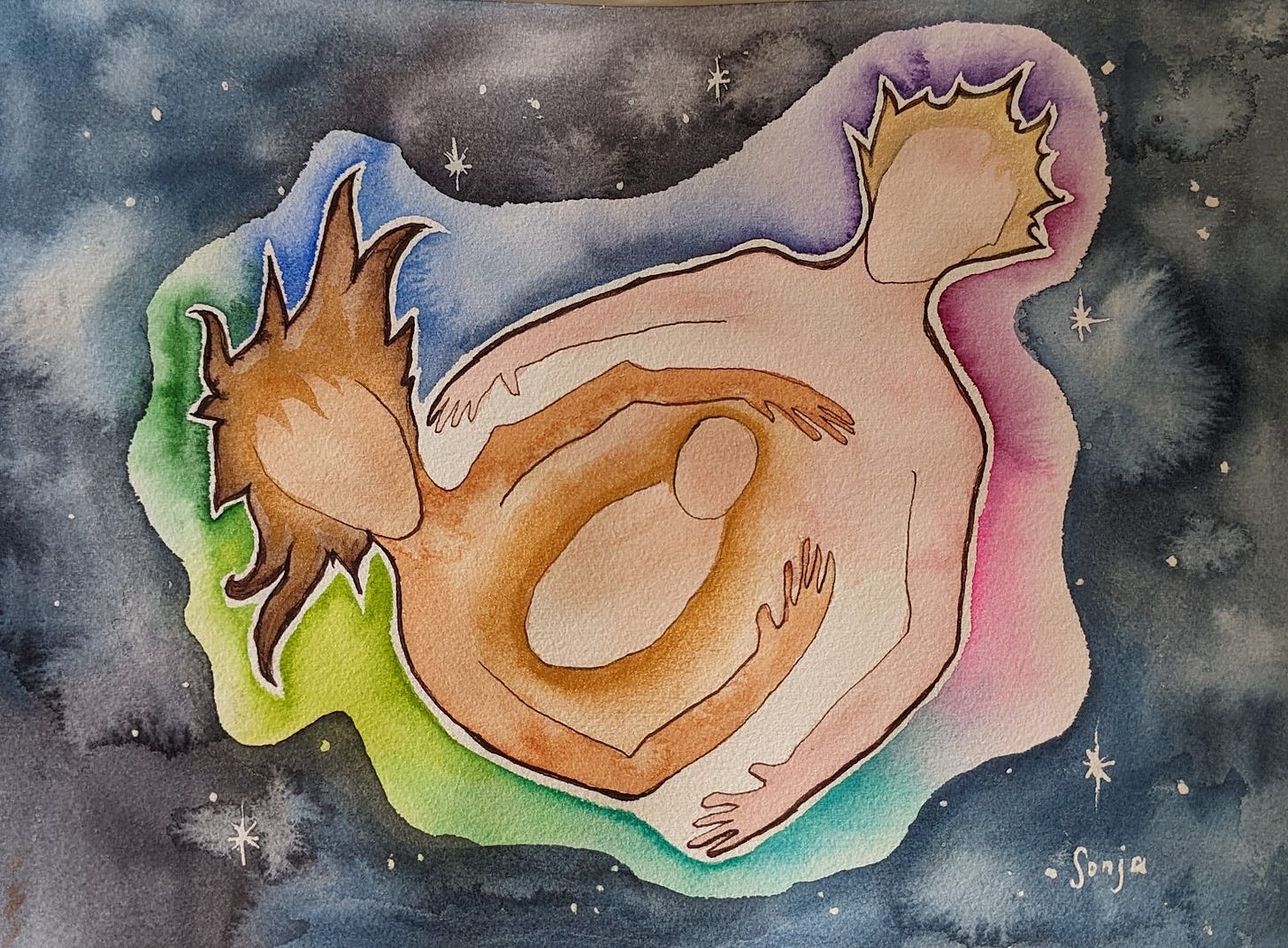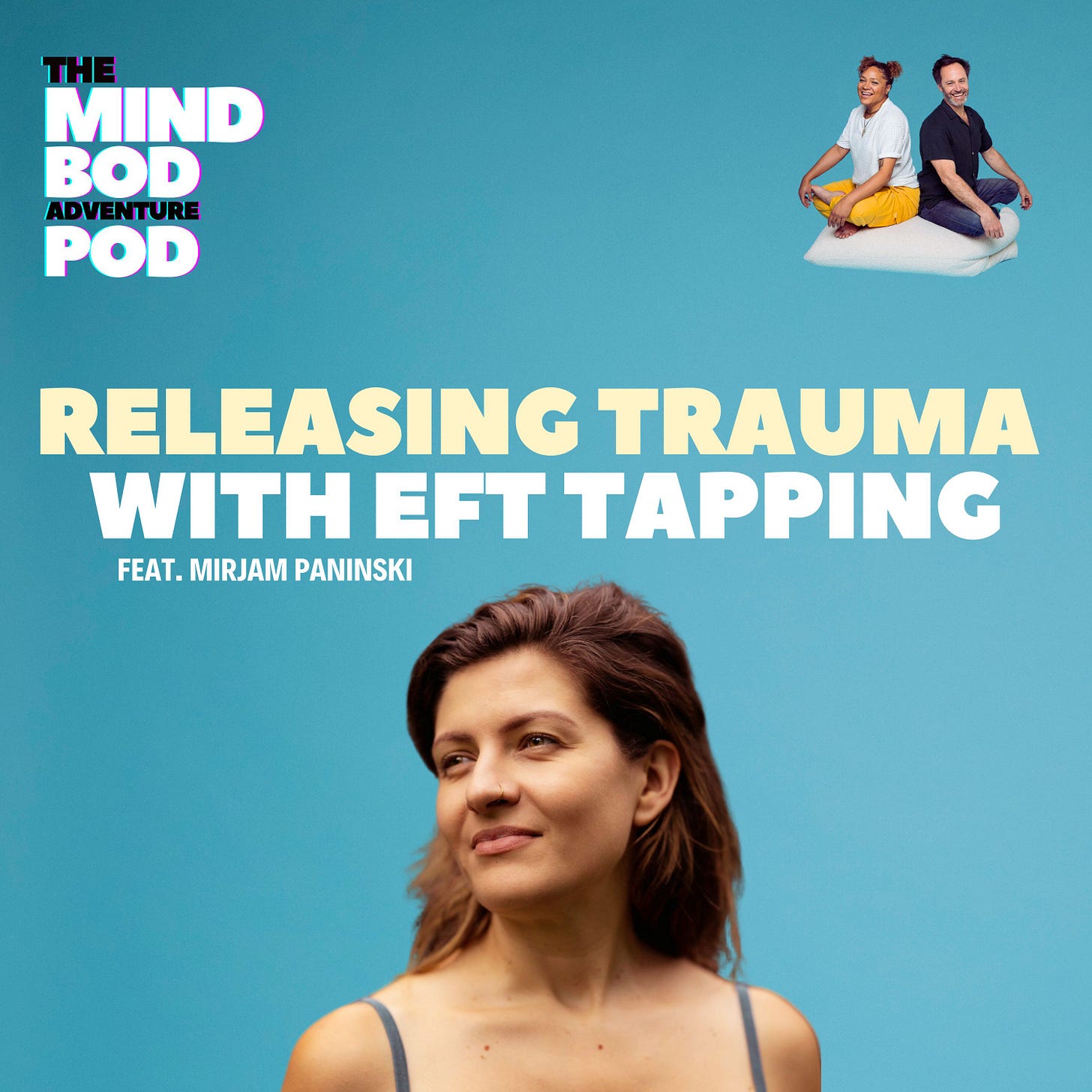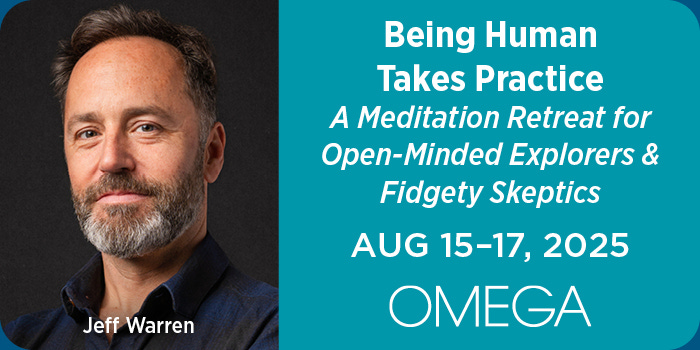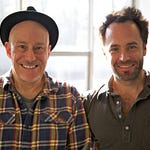My partner Sarah was feeling shut down. It was winter. At the time, our three-month-old son had a fever, and she’d been cooped up in the house with him for days. I thought fresh air would be good for both of them, but nothing I’d been saying could convince her to go outside. I was getting impatient.
“Let’s take the stroller to the park right now!” I said. It was pitch black and minus ten, with thick snowflakes blowing past the street lamp.
She looked at me with great forbearance and said, “I have a better idea: let’s do the felt sense.”
I had forgotten. This was our night practice, something we sometimes did at the end of the day, when we were out of sorts with each other and needed to reconnect.
The “felt sense” was coined in the 70s by a brilliant University of Chicago philosopher and researcher named Eugene Gendlin. At the time, Gendlin was interested in the question of what makes psychotherapy successful. Did it have to do with the modality of therapy, or with the therapist? In his research, he concluded it was neither. Those who got the most out of therapy seemed to all do something similar: directed by their therapist, they were able to get a clear nonverbal sense of their body’s experience in the moment. Gendlin called this “the felt sense”: a subtle stream of intuitions and somatic sensations. It became the basis of his own influential style of therapy, known as “Focusing.”
I said to Sarah, “Close your eyes, and place your attention inside your body. What’s coming between you and feeling ok in this moment?”
It was a standard opening. She knew what to do.
“I feel tension in my neck and shoulders, they feel hunched.”
She paused.
“It’s funny. It reminds me that I used to carry myself with my shoulders back. I felt good – confident. But now I’m always hunched over our baby, feeding him, looking at him. My body has taken on a new shape.”
This is what Focusing is like – maybe it starts with a sensation, but the full meaning of what’s going on is larger. It also involves associations, images, even memories. I repeated what she said back to her, while she deliberately felt into her experience.
She cocked her head. “There’s something else. A vulnerable feeling in my eyes.”
Another pause.
“It’s like I’m not just protecting him. I’m … huh … huh ...”
I stayed quiet while she worked it out.
“Yes, that’s it. I’m also protecting myself. Oh. Wow.”
The insights started to unspool.
“If I’m on the street or in a restaurant and he starts crying, I realize I often feel that people are judging me.” Her voice was tight. “It’s like this with new mothers. Everyone has an opinion about how things should be done. It makes me want to stay hidden, where I can safely make mistakes.” She sighed. “That’s why I don’t want to go outside.”
Her breathing was deeper now, more natural. “Fuck those people,” she said, laughing, her face flushed. The whole room felt different.
“I feel better,” she smiled. “More space in my chest, lighter.” She rolled her shoulders, and then put her hand on my leg, suddenly flirtatious. “My love, what do you say we all go out for breakfast tomorrow?”
Hell yeah.
Why am I sharing this? Not to convince you to take up Focusing, although it is a superb practice. For me it’s yet another example of how the core skills of practice – equanimity, concentration, care, clarity – can be remixed in many different ways, to beneficial effect.
In this case, when we bring awareness to the subtle urges and beliefs that live in our body and underlie our behaviours, then they no longer control us in quite the same way. This human capacity doesn’t belong to Focusing. We can harness it socially, by talking with a sympathetic friend, or moving our body and noticing where we feel resistance, or – of course – meditating on our body’s experience of the moment.
Gendlin used to say that when we send our awareness inside, we change. More of us comes alive.
In today’s practice, I’ll guide you through a modified Focusing practice. It’s definitely possible to focus on your own. And … there’s something extra powerful about the social aspect: having someone reflect back your words, tracking any shifts in your face and body, and offering patient encouragement. Unlike many contemporary mind-body innovators, Gendlin never patented or copyrighted his method. He was too generous, and too much of an anarchist. He believed therapeutic change was a teachable skill that should be in the hands of everyone. He had a vision of small peer groups Focusing in community centres around the world – no leaders, no authorities.
It happened.
Focusing is bigger than ever, with an influence that still ripples through the world of body-based trauma work. His democratizing work was foundational when I created the Consciousness Explorers Club back in 2011.
Thank you Eugene. And thank you Jan Winhall, who taught me Focusing so many years ago. If you’re curious, Gendlin’s short practice manual – Focusing – is a terrific read, elegantly-written and filled with fascinating anecdotes and applications. A summary of Gendlin's six steps can be found here, along with a short video of Gendlin himself guiding his process. Maybe it will inspire you to start your own Focusing partnerships, peer-to-peer-to-peer. I think some version of this is the future of mental health. More on that soon.
In the meantime: spread it around!
Jeff
PS - While researching this post, I found an AI-powered “Gendlin Focusing Session Partner.” It actually works, and may be an accessible way to practice. Please share your experiments and reports in the comments below. I’m especially curious to hear about experiences of sharing this practice with other humans (no offence to the robots).
Have a meditation request?
Great – please fill out this form. Write a (short) bit of context about you and your situation, including what’s helped in the past, or where your curiosity comes from. Although Jeff can’t respond to all requests, there’s value simply in asking. The act of stating a situation – and naming what’s already been supportive – can be clarifying. These questions, along with Jeff’s response and a unique meditation, make up Hey Jeff, a column for paid subscribers. Thank you!
THIS WEEK ON THE MIND BOD ADVENTURE POD
This week on
, we get our somatic groove on with tapping wizard and trauma therapist Mirjam Paninski. Miriam guides us into the world of Emotional Freedom Technique (EFT)—a deceptively simple practice where tapping acupressure points while speaking truth can open up big shifts in the body, mind, and heart. It’s part therapy, part ritual, and part emotional plumbing. Tap along with us and let us know how it lands in your nervous system!Being Human Takes Practice – New York
August 15-17, 2025
Omega Institute, Rhinebeck, NY
This retreat explores what meditation teaches us about being human. It teaches us about resistance and fixation. It teaches us about healing stuck emotions and expanding stuck views. It teaches us mercy and forgiveness, majesty and humility. It teaches us that it’s Ok to fall asleep and wake up refreshed!
















